- Home
- Equipment Reviews
-
Amplification Digital Integrated Mono Block Preamplifier Phono Solid State Tube Analog Sources Cartridges Tape Tone Arms Turn Tables Digital Sources Digital Disc Players DACs Music Servers Streaming Music Services
-
Accessories Power Conditioners Room Accoustics Racks & Stands Audio Software Other iPod iPod Speakers iPod Headphones iPod Transports Headphones Over Ear On Ear In Ear Headphone Amplifier
-
- Audio News
- Event Reports
- California Audio Show, San Francisco
- Consumer Electronics Show
- T.H.E. Show
- Rocky Mountain Audio Fest
- AXPONA
- Salon Son & Image
- Hi-Fi Show & AV Expo
- High End
- Lone Star Audio Fest
- Capital Audio Fest
- TAVES - Toronto Audio Video Entertainment Show
- AK Fest
- Home Entertainment Show
- New York Audio $ AV Show
- Open House Events
- Spotlight
- Music
- The Columns
- 2024 California Audio Show
Latest Reviews & Audio News
-

PS Audio AirLens and DirectStream DAC Mk2 Review
(July 26, 2024) -

Audio Note UK Meishu Tonmeister 300B integrated amplifier, P3 Tonmeister stereo amplifier, M6 Phono Balanced Preamp Review
(July 12, 2024) -

Douglas Schroeder’s One Year Exploration of Digital Front End Systems
(June 25, 2024) -

Arya Audio Labs RevOpods Anti-Vibration Feet Review
(June 25, 2024) -

Lego Icons Retro Radio Review
(June 14, 2024) -
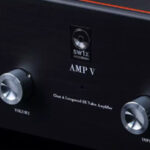
SW1X Audio Design AMP V “Titan” Special directly-heated triode integrated amplifier Review
(June 14, 2024) -
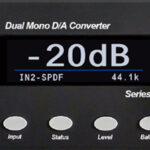
Bricasti Design Model 1 Series II D/A Converter and M5 Network Player Review
(May 24, 2024) -

Star Wars – The Empire Strikes Back – In Concert, May 2, 2024
(May 20, 2024) -
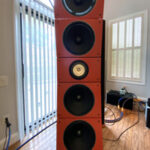
PureAudioProject Quintet15 with Voxativ AC-X field-coil open-baffle loudspeaker system Review
(May 20, 2024) -
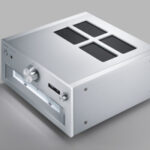
Technics SU-R1000 reference stereo integrated amplifier Review
(May 20, 2024) -
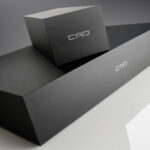
Computer Audio Design GC 1.1 & GC3.1 Ground Control external grounding systems Review
(May 20, 2024) -

Andy Grove of Audio Note UK on IO LTD
(March 23, 2024) -
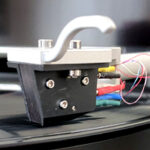
Audio Note UK IO Limited field-coil cartridge system Review
(May 20, 2024) -

EMM Labs MTRX monoblock Input Board Upgrade Review
(March 7, 2024) -

May 2018 Sibelius Violin Concerto concert video via Berliner Philharmoniker Digital Concert Hall app
(February 16, 2024)
-
Categories
-
Amplification Digital Integrated Mono Block Preamplifier Phono Solid State Tube Analog Sources Cartridges Tape Tone Arms Turn Tables Digital Sources Digital Disc Players DACs Music Servers Streaming Music Services
-
Accessories Power Conditioners Room Accoustics Racks & Stands Audio Software Other iPod iPod Speakers iPod Headphones iPod Transports Headphones Over Ear On Ear In Ear Headphone Amplifier
Site Sections
Copyright ©1996-2024 All Rights Reserved.
Popups Powered By : XYZScripts.com

Interview with Christian Thielemann
Date: November 13, 2014
Location: Semperoper, Dresden
© Matthias Creutziger
The year 2014 marked the 150th anniversary of the birth of Richard Strauss (1864-1949). In mid-November I traveled to the “Strauss city” Dresden to immerse myself in the fabled Semperoper’s presentations of some of the German composer’s most celebrated operas.
The Semperoper serves the dual function of being the opera house of the Sächsische Staatsoper Dresden (Saxon State Opera) and the concert hall of the Sächsische Staatskapelle Dresden (Saxon State Orchestra). The latter is, of course, the pit orchestra of the former.
I spoke to Christian Thielemann, director of both companies, after a rehearsal of Capriccio.
My publisher and I would like to thank Matthias Claudi and Juliane Stansch at the Semperoper for arranging the following interview.
* * * * * * * * * * * * * * * * * * * * * * * * * * * * * * *
Your orchestra tours quite often. How do you cope with unfamiliar acoustics?
An experienced orchestra should immediately know what to do. You only need half an hour to go through some passages. That is a daily routine when we’re on tour.
How do you characterize the sound of the Staatskapelle Dresden?
It has a very cultivated, round sound, which is never hard. It’s a very blended, smooth sound. This is an experienced orchestra in opera, just like the Vienna Philharmonic. You have to be with the tempi and dynamics, and need to be very careful with the latter especially.
An operatic orchestra needs to be able to adjust readily: if the singer gives more or less, then it has to adjust accordingly. The musicians themselves must listen. Our orchestra has maintained this tradition since 1548. There is a certain spirit which you don’t find in other places. I would say a very similar spirit is from Vienna (Philharmonic).
© Matthias Creutziger
But in Vienna, when the Vienna State Opera orchestra gives an orchestral concert, they (now in the Vienna Philharmonic guise) do so in a different hall, the Musikverein. Here in Dresden, operas and concerts are held under the same roof.
Yes. This is a tradition in this house since the theatre was built.
We have a special “concert room” on stage for orchestral concerts. But now we’ll have a new one modeled after an old project designed by Gottfried Semper for the first theatre on this site, which burned down in the 1860’s. And we’re very happy that we found the money to build it.
It’s going to be a beautiful “concert room” which we can make bigger or smaller. The shape will be rectangular to the spec of the theatre for good sound. If it’s widened a little too much (for a certain musical work), it will give a megaphone effect. If it’s too narrow, then the sound will be too clumsy.
© Matthias Creutziger
Wagner’s The Flying Dutchman, which you conduct now in Bayreuth, is very densely scored. How do you adjust to the confines of the Festspielhaus’ unique multi-level pit?
Craftsmanship. That’s all. Here you have to be the Kapellmeister, which is a word I like much more than Maestro. It’s a simple and yet complicated task. It has a big simplicity: you just have to ACCOMMODATE.
It’s the same here. It’s the same everywhere because no two opera houses sound exactly the same.